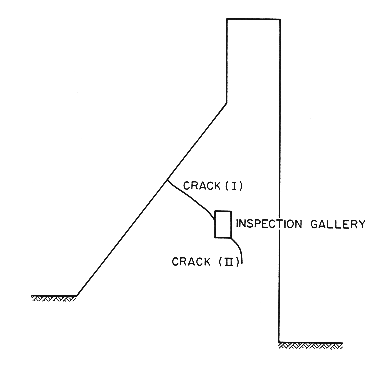|
Chemical reactions in concrete
As you learned in the concrete section, a chemical
reaction occurs when concrete is formed from water, cement, and aggregate.
There is another chemical reaction that may occur later in the life of the
concrete, called
alkali-aggregate reaction (#). In this case, the cement
reacts with a chemical in the aggregate to produce a gel or some other
substance. There are three types of alkali-aggregate reactions:
- alkali-silica reaction, which produces a silica gel
- alkali-silicate/silica reaction, very slow
- alkali-carbonate reaction
|
Fontana dam experienced alkali-silica reaction which
caused large cracks to form. How does the reaction cause cracking? The
reaction creates the silica gel or other product. Then the concrete has to
make room for the silica gel, so the concrete has to expand, or "grow". This
expansion, like expansion due to heat, causes tension in the concrete. As you
saw in the concrete section, concrete is not
strong in tension and will crack. Fontana dam is still "growing" because of
the reactions! |
 the cracked Fontana dam, Tenessee |


|




